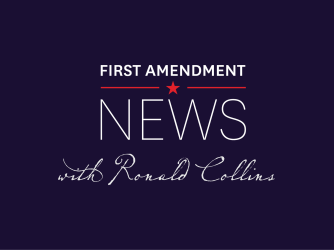Table of Contents
Franklin & Marshall students set example handling controversial speaker

Earlier this month, while all eyes were on Charles Murray’s disastrous visit to Middlebury College, you may have missed another speaker protested for his talk on a college campus. The protest this speaker encountered, however, led to a very different outcome.
Flemming Rose sparked worldwide controversy when he commissioned and published cartoons of the prophet Muhammad in 2005 as culture editor of the Danish newspaper Jyllands-Posten. Rose spoke at Franklin & Marshall College March 2, the same day Murray went to Middlebury.
Rose came to the college after being invited by Matthew Hoffman, chair of Judaic studies at F&M, and though Rose faced protests, all reports indicate that the event was engaging and challenged the speaker. Several dozen protesters gathered in F&M’s packed Stahr Auditorium where Rose spoke.
Inside Higher Ed reports:
At Franklin & Marshall, Rose spoke — without incident, except for some raised voices in conversations before the event — even as students organized a protest that did not disrupt the lecture.
College officials at F&M are proud of the way their students — both those who wanted to hear Rose and those who disagree with him — handled the visit. And they point to both policies and practices at the college that encouraged nondisruptive protest and that might be applied elsewhere.
According to reports from the student newspaper, Rose gave his full talk without interruption and fielded questions from students on a variety of hot-button issues.
“There have been a number of social critics — in and outside of the academy — who have labeled an entire generation of students as illiberal crybullies,” F&M president Daniel R. Porterfield told Inside Higher Ed. “If you work at a college campus, you know that these sweeping denunciations are not accurate. Many students in the last two years have protested speech that they felt was offensive to them in a pro-speech manner, but you don’t read a lot of descriptions of the media about pro-speech protest.”
F&M recently adopted a Statement on Freedom of Expression based in part on the Chicago Statement. Its conclusion explains:
In short, the College holds the core principle that debate or deliberation should not be suppressed because of the ideas put forth. We support a climate of inclusiveness in which all members are encouraged to contest vigorously the ideas and the speech that they oppose.
Among the most prevalent arguments for shouting down or no-platforming controversial speakers is that their ideas and speech are too dangerous to be heard. When these speakers are given a platform, so the argument goes, counter-speech will be insufficient to protect against seductive and hateful ideas. But by acting within the spirit of vigorous debate, F&M students were able to bring a controversial figure to their campus and have the speaker sufficiently challenged and heard at the same time.
In the process, F&M students respected the rights of students to engage with speakers on campus, and students showed that countering speech with more speech is a productive and effective way to respond to a controversial speaker on campus.
F&M still maintains a campus policy that earns FIRE’s worst, “red light” rating for its restrictions on speech. F&M should build on the foundation laid with its Statement on Freedom of Expression — and its commitment to allow its students to “contest vigorously the ideas and the speech that they oppose” — by reforming its remaining speech codes to ensure the greatest protection for student speech rights. FIRE would be happy to lend a hand.
To hear more about Flemming Rose on free speech, check out our extensive interview with him on a recent episode of our “So to Speak” podcast.
Recent Articles
FIRE’s award-winning Newsdesk covers the free speech news you need to stay informed.

VICTORY: Michigan town declares Sept. 6 ‘First Amendment Day’ after FIRE sues its mayor for shouting down residents

USC canceling valedictorian’s commencement speech looks like calculated censorship

Back into the FIRE: Hasen’s response to FIRE and Rohde: Don’t read the press clause out of the Constitution — First Amendment News 420
